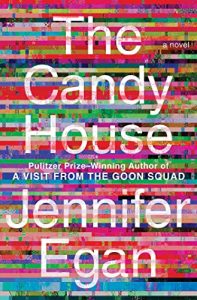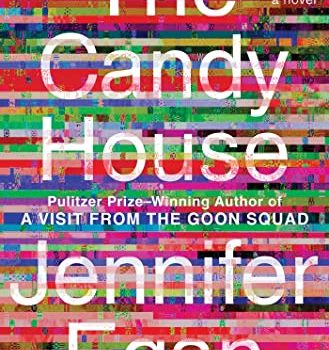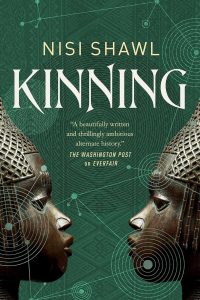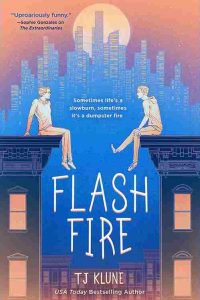Ian Mond Reviews The Candy House by Jennifer Egan
 The Candy House, Jennifer Egan (Scribner 978-1-47671-676-3, $28.00, 352pp, hc) April 2022.
The Candy House, Jennifer Egan (Scribner 978-1-47671-676-3, $28.00, 352pp, hc) April 2022.
As the publishing Gods would have it, Emily St. John Mandel’s Sea of Tranquility is published in the same month as Jennifer Egan’s The Candy House. Moreso than Margaret Atwood, I consider Mandel and Egan to be the mainstream authors who have done the most to blur the artificial lines between literary and speculative fiction, as evidenced by the popularity and prizes lavished from both sides of the divide on A Visit from the Goon Squad (Egan) and Station Eleven (Mandel). It also happens that both The Candy House and Sea of Tranquility are in conversation with those earlier works, with The Candy House a direct sequel to A Visit from the Goon Squad. And finally, just like Sea of Tranquility, which is the closest Mandel has come to writing ‘‘core’’ science fiction, The Candy House is Egan at her most speculative.
As with its predecessor, The Candy House is split into 13 chapters, each told from a different character’s perspective. In the case of A Visit from the Goon Squad, the narrative revolved around Bennie Salazar, a record company executive, his kleptomaniac assistant Sasha, and the various family members, friends and enemies in their orbit. With The Candy House, the focus shifts to those individuals who played a peripheral role in A Visit from the Goon Squad, namely the families of Ted Hollander (Sasha’s Uncle) and Lou Kline (Bennie’s mentor). The opening chapter, however, involves Bix Bouton, a nicer equivalent of Mark Zuckerberg, who appears briefly in A Visit from the Goon Squad. In 1992 Bix had a ‘‘Vision’’ that led him to establish Mandala, a social media platform with the global reach and ubiquity of Facebook. With his ‘‘Vision’’ almost complete, Bix is awaiting his next epiphany, ‘‘but whenever he tried to peek beyond that edge, his mind went white.’’ Then one night, wearing a disguise (‘‘he’d purchased a headscarf with dreadlocks emerging from the back’’), Bix joins a small group of academics and students led by Ted Hollander to discuss the anthropological work of Miranda Kline, whose theories about human nature Bix employed as the foundational algorithms for Mandala. It’s during the discussion, sparked by a mention of lab experiments involving the uploading of a cat’s consciousness, that Bix is struck by a new ‘‘Vision.’’ In 2016, Mandala releases ‘‘Own Your Unconscious,’’ a means of downloading your memories and the feelings associated with those experiences, to be freely shared by Mandala’s ‘‘Collective Consciousness.’’ It’s a technology that leaves an impression on the interconnected stories that follow, threading through the lives of the Hollander and Kline families.
Both A Visit from The Goon Squad and The Candy House are about memory and the passage of time. In A Visit from the Goon Squad, these themes are expressed through music, particularly rock ’n’ roll, which has always been symbolic of youth, but also feelings of nostalgia. Central to the novel is Egan’s portrayal of the music industry and its transition from being all about the artist to being all about the money. Egan takes a similar tack in The Candy House. With a focus on technology and social media, Egan charts how Bix’s aspirational ‘‘Vision’’ to connect people globally is transformed into something less innocent, less altruistic. Like many science fiction authors before her, Egan questions whether we ultimately lose our authentic selves if every aspect of our lives, including our memories, is mediated exclusively through technology. Because she’s a terrific writer, at no point does Egan come across as a Luddite or a reactionary. In fact, on several occasions, she demonstrates the benefits of the ‘‘Collective Unconsciousness,’’ whether it be Christine Kline getting to know her father through his memories, something she was unable to do when he was alive, or providing Roxy Kline, a recovering drug addict, some comfort that her memories, troubled though they are, will outlast her. However, as Egan writes in the final pages of the novel, ‘‘knowing everything is too much like knowing nothing; without a story, it’s all just information.’’ It’s this anxiety, that our lived experiences will be nothing more than just another data point in the cloud, that echoes across each chapter.
While The Candy House is branded as a novel, it can also be experienced as a short story collection. As such, there are some ‘‘chapters’’ that stand out. I especially loved ‘‘Case Study: No One Got Hurt’’, which centres on Alfred Hollander – son of Ted – who, when he was younger, became allergic to the ‘‘artifice’’ of TV.
It became impossible to watch the news with Alfred. It became hard to watch Cheers with Alfred. It became preferable not to watch anything with Alfred, who was apt to holler from the couch, still with a slight lisp: ‘‘How much are they paying her?’’ or ‘‘Who does he think he’s kidding!’’ It broke the mood.
What starts as a humorous story about an eccentric young man evolves into this discomforting look at the notion of authenticity – an underlying theme of the novel. I also adored ‘‘Rhyme Scheme’’, which is told from the perspective of Sasha’s neuroatypical son Lincoln, who works for a software company that looks to clean the internet of all the ‘‘proxies’’ and ‘‘eluders’’ that allow a person to hide their true identity. It’s a rather touching love story with a darker edge as we come to understand that not everyone has bought into Bix’s ‘‘Vision’’ of an interconnected and fully transparent world. But my favourite piece is The Candy House’s take on the ‘‘PowerPoint’’ chapter from Goon Squad. Told entirely through a messaging app, ‘‘See Below’’ is this hilarious and emotionally fraught tale of Lulu Kisarian’s convoluted attempt to meet her father, a famous actor who doesn’t know she exists. This story ties together multiple threads from both Goon Squad and The Candy House and is a sheer delight to read.
It’s doubtful that Egan will win a second Pulitzer with The Candy House. But that shouldn’t undersell the excellence of the novel or the very human story it tells about our memories, about the legacy we leave behind, and about our authentic selves.
Ian Mond loves to talk about books. For eight years he co-hosted a book podcast, The Writer and the Critic, with Kirstyn McDermott. Recently he has revived his blog, The Hysterical Hamster, and is again posting mostly vulgar reviews on an eclectic range of literary and genre novels. You can also follow Ian on Twitter (@Mondyboy) or contact him at mondyboy74@gmail.com.
This review and more like it in the April 2022 issue of Locus.
 While you are here, please take a moment to support Locus with a one-time or recurring donation. We rely on reader donations to keep the magazine and site going, and would like to keep the site paywall free, but WE NEED YOUR FINANCIAL SUPPORT to continue quality coverage of the science fiction and fantasy field.
While you are here, please take a moment to support Locus with a one-time or recurring donation. We rely on reader donations to keep the magazine and site going, and would like to keep the site paywall free, but WE NEED YOUR FINANCIAL SUPPORT to continue quality coverage of the science fiction and fantasy field.
©Locus Magazine. Copyrighted material may not be republished without permission of LSFF.







